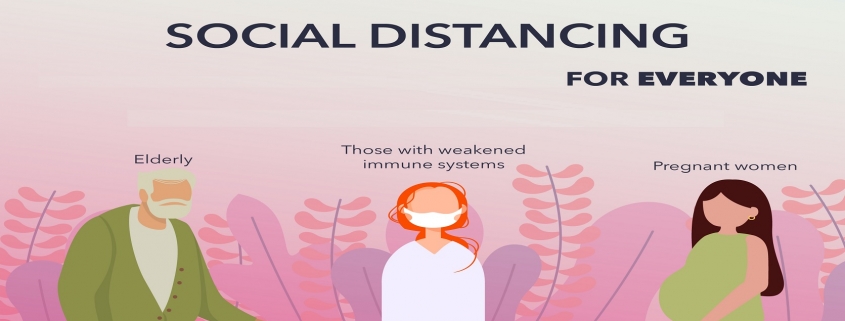Are Easing of Restrictions Possible?
Zeba I. Seraj (PhD), Professor and Chair, Biochem and Mol Biol & Director cBLAST, University of Dhaka
“Lockdowns must be lifted strategically, and not all at once said WHO officials at a briefing on 13 April 2020. However, we should be careful to adopt our own guidelines considering our own unique situation in Bangladesh for gradually coming out of the lockdown. Countries where infection rate has slowed down and the numbers of infection are low can begin easing restrictions, but with care.
It is important to note that social distancing and handwashing and wearing masks even if cloth ones have to become the newer norm. Garment factories can be encouraged to make washable cloth masks for distribution all over the country at a reasonable price. (They may be able to export these too because until a vaccine is out, wearing of masks will have to be the new uniform). So we may need to wear masks for at least another year or two. Pharma companies can start making sanitizing agents for distribution to the whole country. Hospitals, tests and consistent treatments need to be in place in all diagnostic centres, big offices and factories. This can be done with the Rapid test in place which has already been established by the Abott Company in the USA. But our scientists can do this too provided that they are provided with samples. Hospital spaces and ICU units need to be expanded before lockdown is even gradually lifted. Hospitals must also ensure that protective equipment is in place and intensive care beds are on standby.
CARES is committed to giving the society the right information about the COVID -19. Only scientific discussions by practising scientists from Bangladesh and other places are in CARES website. Here are some new insightful suggestions from Professor Dr Jeba Seraj, an active member of CARES and a life scientist at Dhaka University. At CARES we talk science. Engage Science in your life. – Wali-ul-Maroof Matin, Chairman, CARES
Coordination and training cells for social distancing and maintaining hygiene to prevent spread have to be present in all Upazilas and thanas. The IT ministry can send training videos to all mobile users.
For Bangladesh, we need to consider how to open gradually with social distancing and hygiene (including surfaces of workplaces). We will need different guidelines for different settings. For townships,
- Grocery and other shops. Grocery shops are already open. Other shops can gradually open with strict guidelines in place. In a fixed area, certain shops can remain open on fixed days.
- Construction workers and daily laborers and workers in the agricultural sectors. Construction supervisors will need to be trained first. They will need to give daily instructions to construction workers and other daily laborers. Agricultural extension worker need to be trained and then they will in turn need to train the farmers. This is a good time to reign in middlemen. The latter need to be trained on how to remain safe too.
- Office staff: they can also start working in shifts or on alternate days.
- In case of industries: they need isolation units with a few beds and their own testing facilities. They also need to keep their premises clean.
- Separate sets of rules have to be in place for slum areas. Disinfectants and sanitizers need to be provided to this latter category at an ever cheaper rate.
Schools, colleges and Universities can be the last ones to be opened. Meanwhile IT ministry can ensure Wi-Fi services all over the country for establishment of online classes and quizzes.
According to WHO, countries easing lockdowns should meet the following criteria:
1. The transmission is controlled.
2. Health system capacities are in place to detect, test, isolate and treat every COVID-19 case and trace every contact.
i. Tests need to be expanded quite a lot. Many university departments have the necessary machines but may need the kits.
ii. A database needs to be established for coordination of the detection and testing. CDC has given the green signal to use of saliva as a proper sample to detect Covid 19. The latter is much easier and less prone to splashing of virus-contaminated aerosols. The rapid test based on an isothermal test needs to be established. Our scientists have the capacity do this.
iii. Apps for contact tracing need to be established. And research on back-tracing of persons coming into Bangladesh from the middle of January needs to be done.
iv. Relevant scientists need to be provided with samples from different regions of Bangladesh for sequencing. Since this virus mutates a lot, its sequence will need to be known in order to determine whether any vaccine will be effective.
3. Outbreak risks are minimized in special settings like health facilities and nursing homes.
4. Preventive measures are in place in workplaces, schools and other places where it’s essential for people to go.
5. Importation risks can be managed. Airports need to be controlled by the Army. All passengers kept aside until tested to be free of virus. Rapid tests need to be in place and all tested before being allowed into the community.
6. Communities are fully educated, engaged and empowered to adjust to the “new norm”.
WHO advice is: Countries seeing their numbers stabilize should not believe the worst is over. Measures such as physical distancing and handwashing will need to stay in place even after lockdowns are lifted. “We are going to have to change our behaviors for the foreseeable future, says a WHO official. Increased capacity at health systems will also need to be maintained once restrictions are eased. “As we come out of these lockdown situations, we may see a jump back up of cases. And we don’t want to lurch from lockdown to nothing. So now is the time to be very, very careful.”





Leave a Reply
Want to join the discussion?Feel free to contribute!